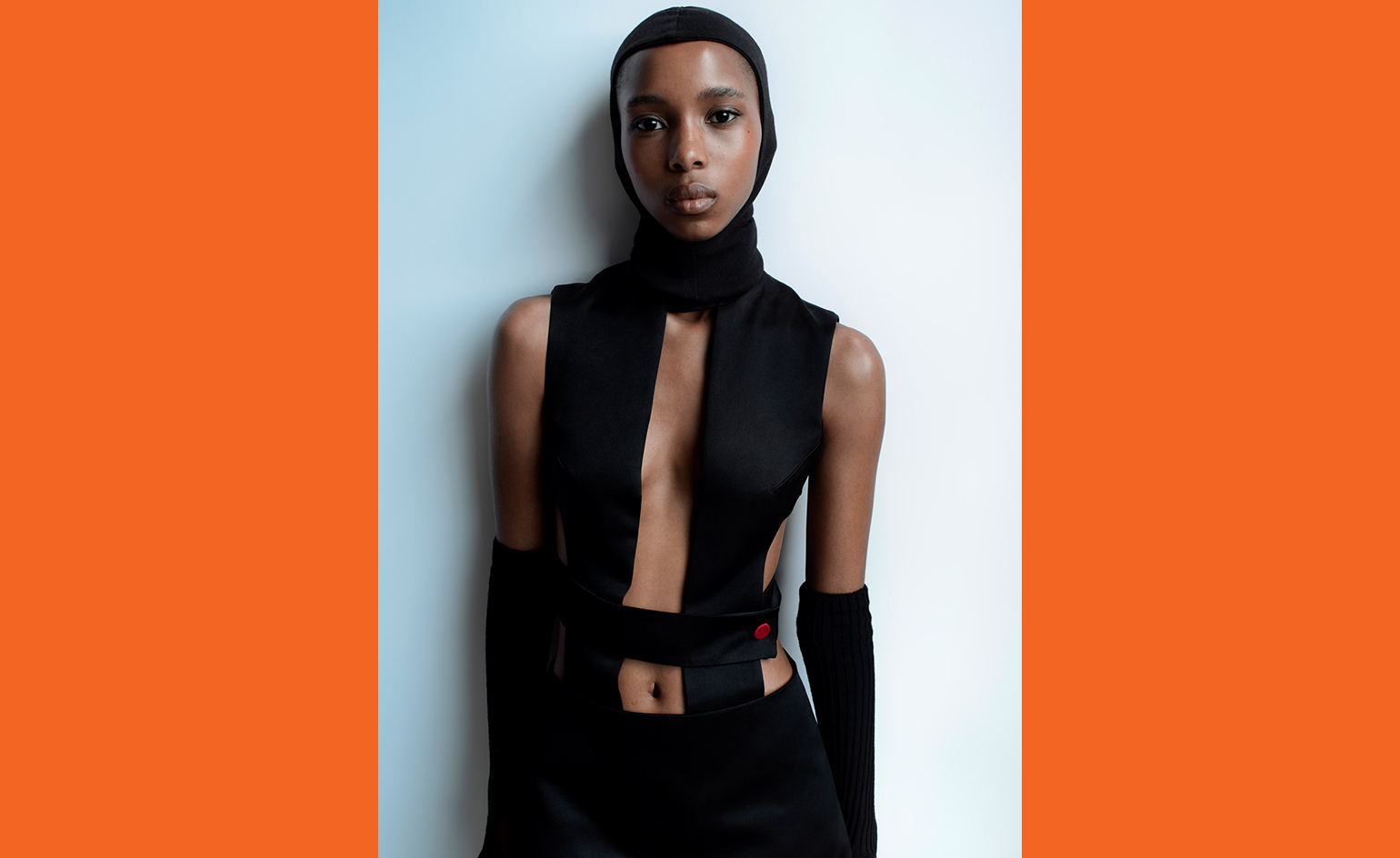Maximilian: ‘I’m reclaiming iconic moments and references for the Black community.’
As part of our Fashioning the Future series, we explore Maximilian’s A/W 2021 collection

Dougal MacArthur - Photography
With the lens through which we have traditionally viewed fashion now thrown wide open, the rise of the Manchester-born designer Maxmilian Davis couldn’t feel more perfect, or needed. Davis, who only made his debut a year ago when he presented his inaugural collection with Fashion East, has quickly become a frontrunner in the international fashion circles for his sophisticated vision of Black elegance. Continually drawing from his Trinidadian heritage and family upbringing, while questioning a wider breadth of historical references along the way, Davis’ multifaceted approach is consistently unified in a singularly visionary collection; his Autumn/Winter 2021 offering being his second and most recent.
For this season, Davis looked back at old family photographs from the late 60s and early 70s, taken not long after his grandmother emigrated from Trinidad to England in 1965. Inspired as much by her meticulously composed Sunday Best wardrobe as the space-age futurism that dominated fashion during that time, Davis offers a reimagining of this iconic period that includes a wider range of perspectives and identities, which have been typically looked over until now.
‘That time was so incredible for fashion, and particularly in showcasing strong and powerful women,’ he says. ‘It’s not fair to exclude Blackness from that story – so I wanted to rewrite the narrative.’
In Davis’ retelling, recognisable features of the era such as mini hemlines, black and white optical prints, and round-shouldered jackets have been infused with a Trinidadian flair. Ranging from the use of velvet devoré fabrics and cracked leathers, which nostalgically nod to Carribean interiors, to the appearance of resin belt buckles and broad-striped disco trousers that evoke the cultural cool of photographer Malick Sidibe’s subjects, Davis’ translation of a previously homogeneously documented time period makes a memorable impact, to say the least.
‘I wanted to take what exists, but make it my own,’ he reflects. ‘I’m reclaiming these iconic moments and references for the Black community.’
INFORMATION
A version of this article appears in the September 2021 issue of Wallpaper* (W*269), now on newsstands and available for free download
instagram.com/_mvximilian
Wallpaper* Newsletter
Receive our daily digest of inspiration, escapism and design stories from around the world direct to your inbox.
Pei-Ru Keh is a former US Editor at Wallpaper*. Born and raised in Singapore, she has been a New Yorker since 2013. Pei-Ru held various titles at Wallpaper* between 2007 and 2023. She reports on design, tech, art, architecture, fashion, beauty and lifestyle happenings in the United States, both in print and digitally. Pei-Ru took a key role in championing diversity and representation within Wallpaper's content pillars, actively seeking out stories that reflect a wide range of perspectives. She lives in Brooklyn with her husband and two children, and is currently learning how to drive.
-
 Put these emerging artists on your radar
Put these emerging artists on your radarThis crop of six new talents is poised to shake up the art world. Get to know them now
By Tianna Williams
-
 Dining at Pyrá feels like a Mediterranean kiss on both cheeks
Dining at Pyrá feels like a Mediterranean kiss on both cheeksDesigned by House of Dré, this Lonsdale Road addition dishes up an enticing fusion of Greek and Spanish cooking
By Sofia de la Cruz
-
 Creased, crumpled: S/S 2025 menswear is about clothes that have ‘lived a life’
Creased, crumpled: S/S 2025 menswear is about clothes that have ‘lived a life’The S/S 2025 menswear collections see designers embrace the creased and the crumpled, conjuring a mood of laidback languor that ran through the season – captured here by photographer Steve Harnacke and stylist Nicola Neri for Wallpaper*
By Jack Moss